With family summer trips all but impossible now that my kids have their own commitments, winter break became the only time for any kind of meaningful travel (and wife couldn’t make it because of work). My original plan was to visit London, for my kids and I have never been to Europe, but all three made it clear that they preferred to fly to Korea and possibly Japan also.
But there was a problem. Direct flights from LAX to Incheon were so outrageously expensive (economy seats were $2800 ~ $3000 per person). I ended up booking a flight from LAX to Tokyo Narita (NRT), 4.5-hour layover, then to ICN for about $1450 per!! This cost-conscious itinerary actually turned out to be ideal for us because we wanted to spend at least a few days in Japan. (the cost breakdown for any of you who might be interested, please refer to the footnote.)1
Before anything else, I think I should talk about this for all you future Korea visitors.
This is called a “T Money” card. It’s the size of a credit card and you can buy it at any of the countless convenience stores for 3,000 KRW (~$2.50). The design may be different—I’ve seen BTS cards and Kakao and Line Friends cards.
Look for that T Money logo at the bottom right of the card. They all work the same. This is a good great thing to invest some money in. You purchase the card and add balance to it with any amount of money you’d like at the convenience store or any of the subway stations. Start with 10,000 KRW (~$8) and see how it works. You can use it for the Seoul Metro subway rides, all the city bus rides, pay for taxi fares, use the balance at convenience stores to buy snacks and drinks… In fact, because some of the public transportation doesn’t accept cash anymore, this might even be a requirement.
This is inside a bus. You tap your T Money card here when you get on and when you get out (this is important for transfer purposes). It will give you a beep for a proper reading of the card and show the remaining balance each time.
As for transfers, say you have to take the subway for a few stops and then transfer on to a bus. You get a 15-minute window of getting off of one mode of transportation and catch on to another. When you do, this is deemed a “transfer” (that machine will say “환승입니다, hwan-seung-imnida”) and you’re not charged twice.
There are things that a 54-year-old man wants to do when he travels, and there are things that 20-year-old girls (20, 19, 17 to be exact) want to do. And they’re largely incompatible. I don’t need to tell you whose plan we went with.
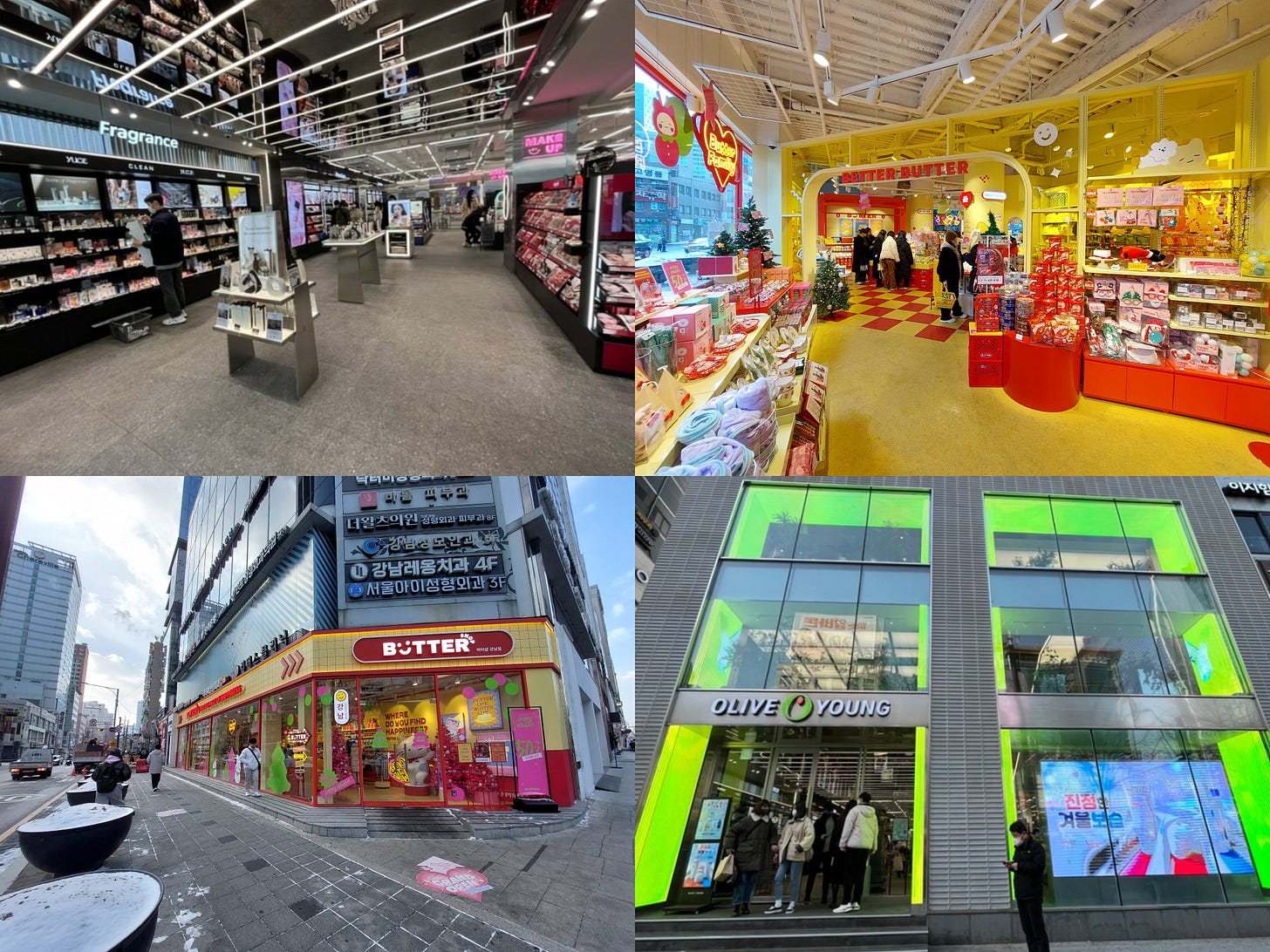
Shopping, shopping, and more shopping. Around Gangnam subway Station there are tons of trendy shops and eateries on the surface streets. I make the distinction of saying “surface” streets because there is a whole another world underground. Unlike most of the subway stations in the US, where you want to get the hell out of ASAP, subway stations in Seoul can be destinations unto themselves.
Gangnam Station underground is clean, pleasant to walk around, and offers more shopping and inexpensive snacks like kimbap (김밥), tteok-bokki (떡볶이), and other baked goods for under $3 USD.
Then, there’s the Goto Mall.
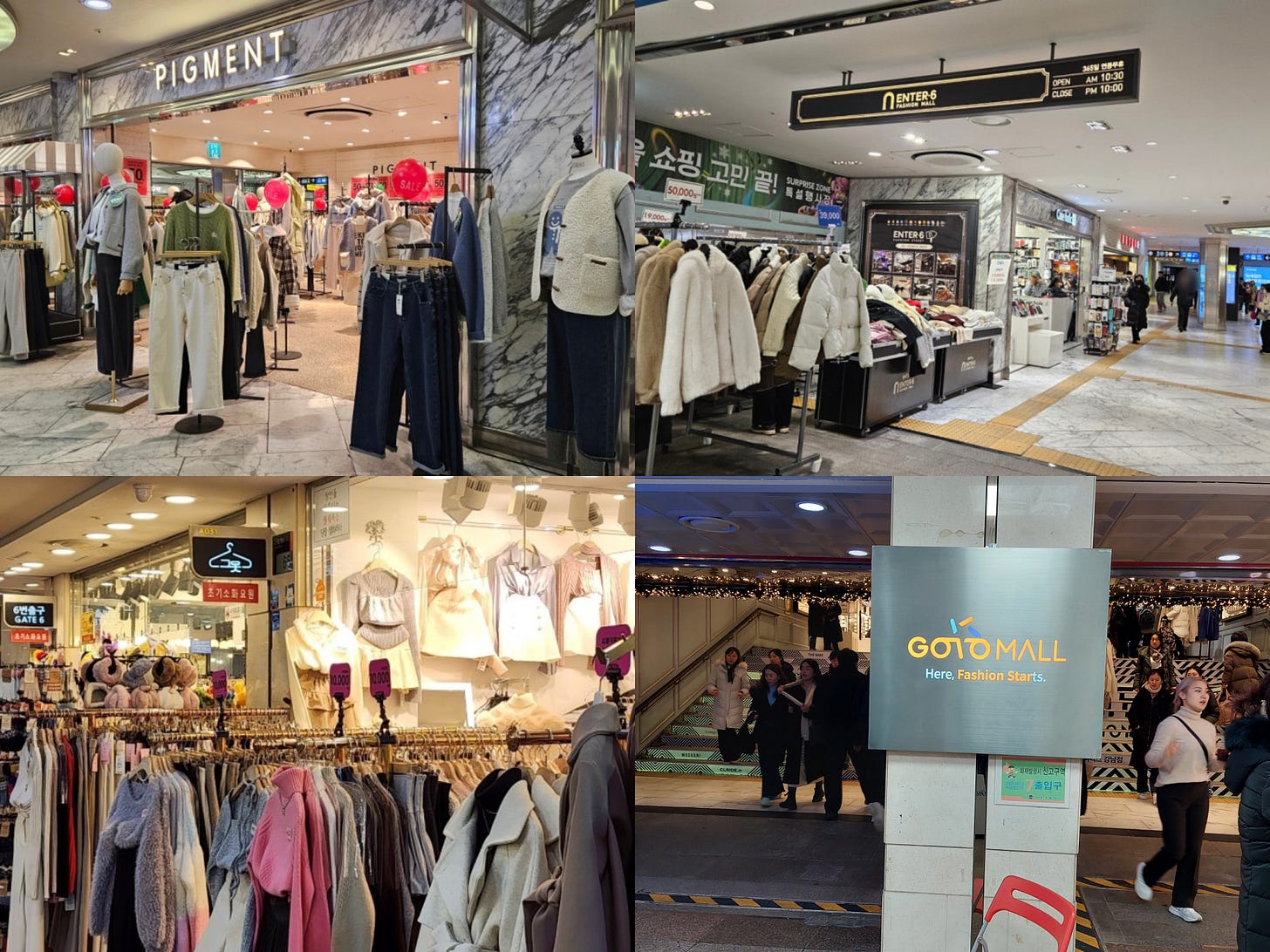
In another part of Gangnam area, there is an Express Bus Terminal that is not far from Gangnam Station. Three different Seoul Metro subway lines converge at the Express Bus Terminal subway Station (Go-sok Bus Terminal 고속버스 터미널). The word “Goto Mall” is a wordplay on the “Go Ter” (from Go-sok and terminal) and the underground mall is 833 meters long (half a mile) with 630 individual shops packed into 4 rows. So, if you were to walk the entire length of all the stores, it’d be 2 full miles.


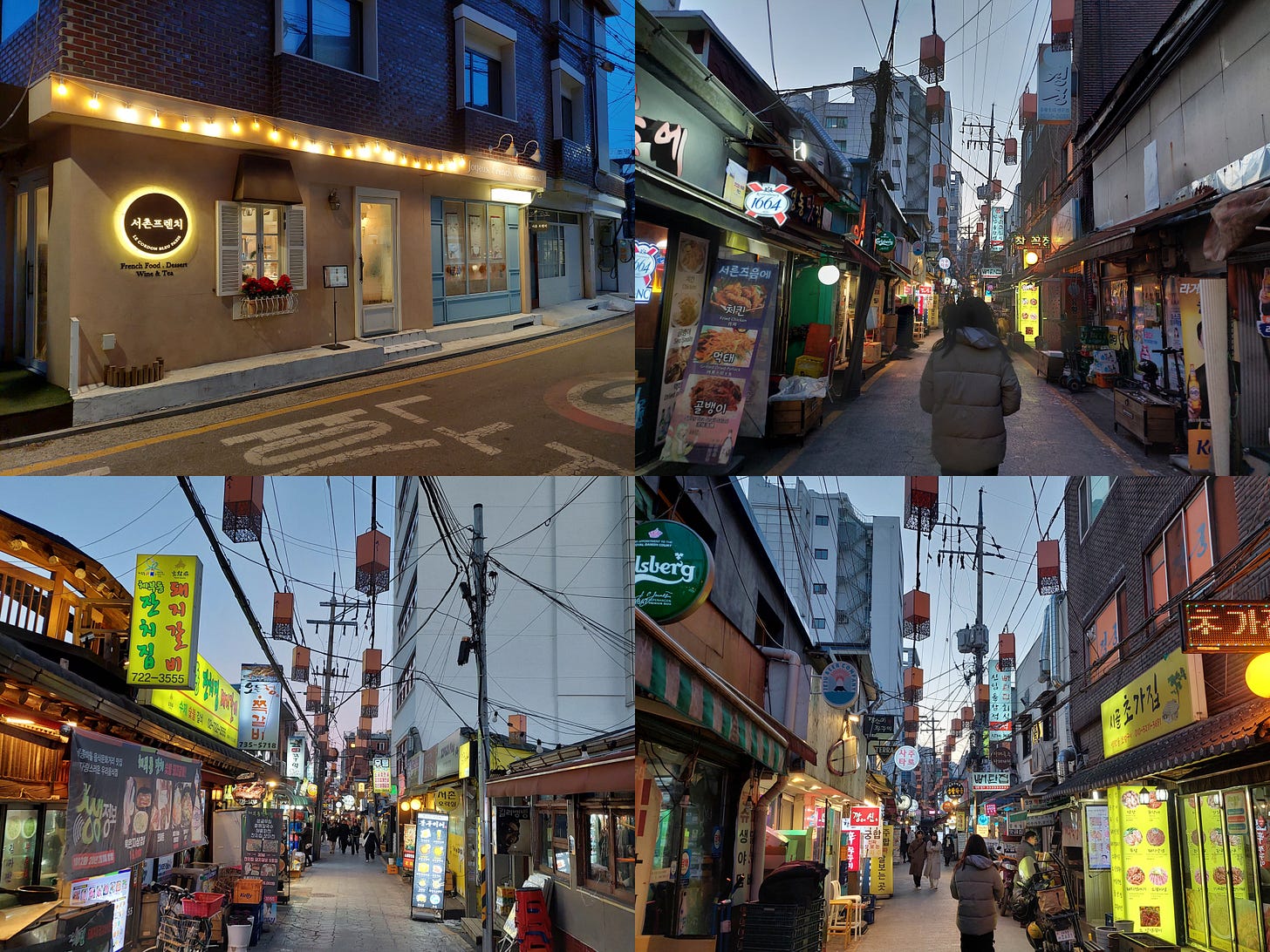
The narrow streets of Seochon (서촌) are lined with these quaint watering holes where you can enjoy all sorts of traditional Korean (alcoholic) beverages and foods. The atmosphere here is incredible and it’s one of the things I didn’t get to savor this time around (not that I like drinking anyway). Where else in the world can you jump from an old-style Korean pub/restaurant to a tiny Spanish tapas/wine bar lit only by candles right next door?
Not far from Seochon, there is the wildly popular Ikseon-dong (익선동) area. Directly east of the Gyongbokgung Palace, this area is also lined with old traditional houses that have been modified into shops, restaurants, and cafes.

I can’t possibly list all the things and places that we’ve done and visited (I lost 7 pounds just from walking so much—I’ll have a point about this in my Tokyo posting), but let me leave you with this juxtaposition of two images.
On our way to Dongmyo (동묘) street markets, we walked past Dongdaemun (동대문), one of the four main gates of Joseon Dynasty’s capital city of Hanyang (today’s Seoul). The building you see in the background (to the left of Dongdaemun) is JW Marriott.
Built in 1396, this side of the stone wall still stands to its original form. The quarried stones are not identical in size nor perfect in shapes, but they fit into one another like a well-made Swiss watch—I think the irregularity gives it more character. What do you think?
That same night, we had our last dinner in Seoul at one of the restaurants that my kids found on Instagram near Gangnam Station.

This Korean/Japanese fusion restaurant served up some yummy dishes. A very trendy hipster kind of place that was packed with youngsters, 95% of the patrons being young ladies with phones in their hands. Boy, did I feel out of place (one of the very few men and clearly the oldest). Here, everything was done through…
this little contraption where you order the food and settle the bill all in one shot. Do you see the slot for your credit card next to that blue light at the bottom?
Seoul is that kind of a city—a city with so much history and culture that co-exists with technological marvels (a credit card machine at a dinner table doesn’t qualify as a marvel, but you know what I mean) everywhere you turn. I just hope it won’t be another 5.5 years until I visit again.
On to Tokyo next…
Roundtrip from LAX to Tokyo Narita via Zipair (low-cost carrier operated by Japan Airlines) was $4622, including 4 X $85 service package. Average cost per person was $1,155. Roundtrip from Tokyo Narita to Incheon via Asiana (one of the two major Korean airlines) was $300 per person. Total = 1155 + 300 = 1455 per person. airport to city transfers were purchased through klook.com that had pretty good deals overall.




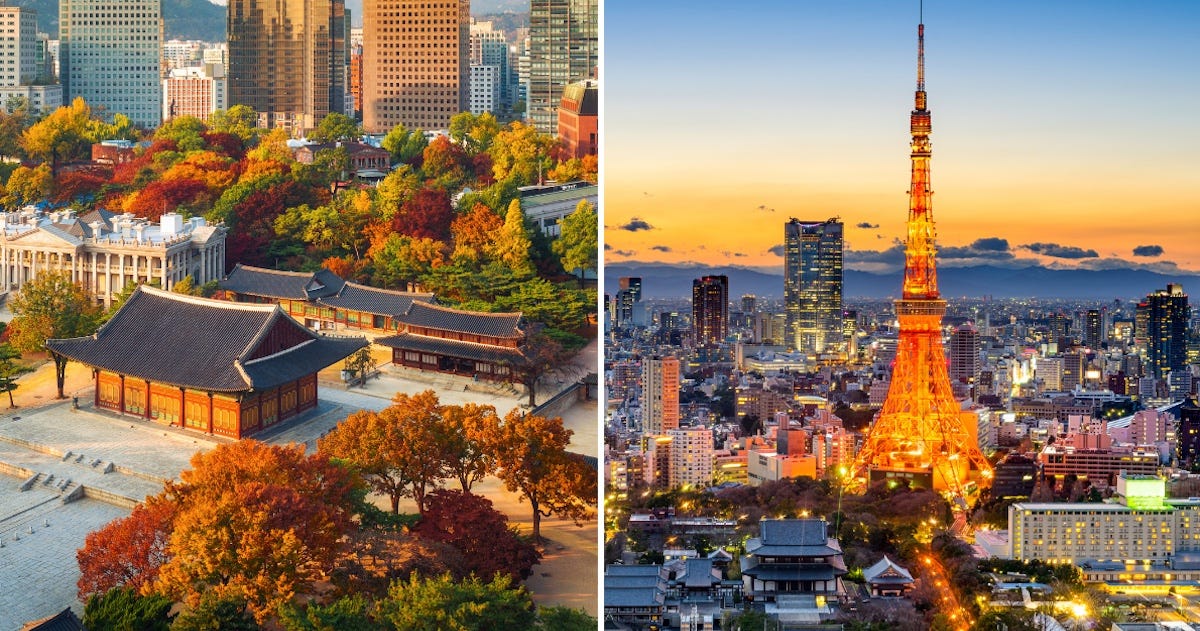
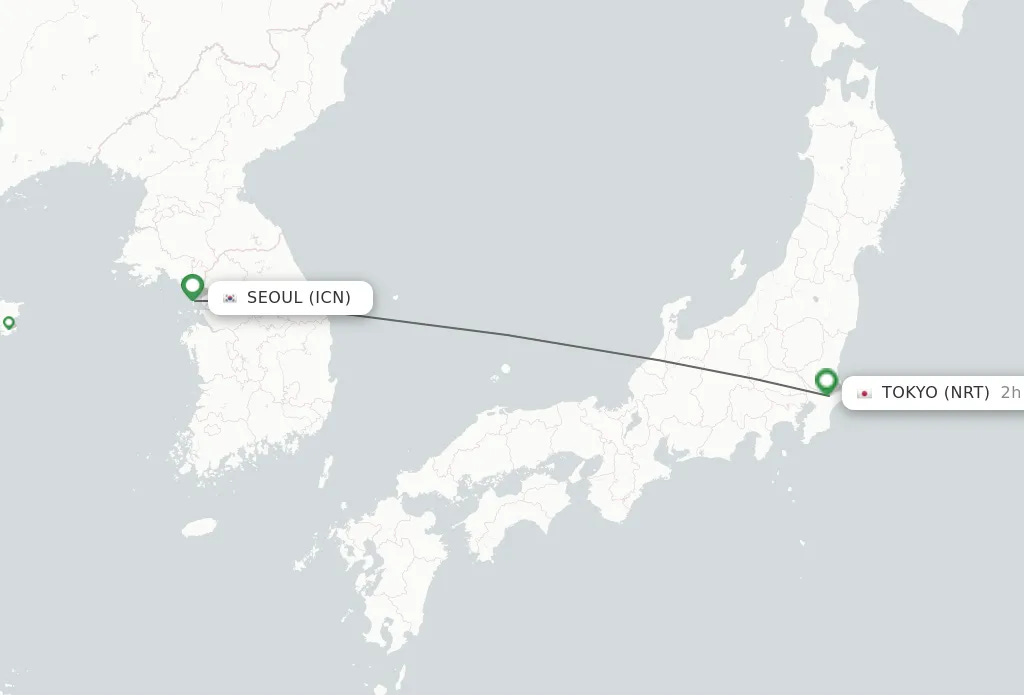






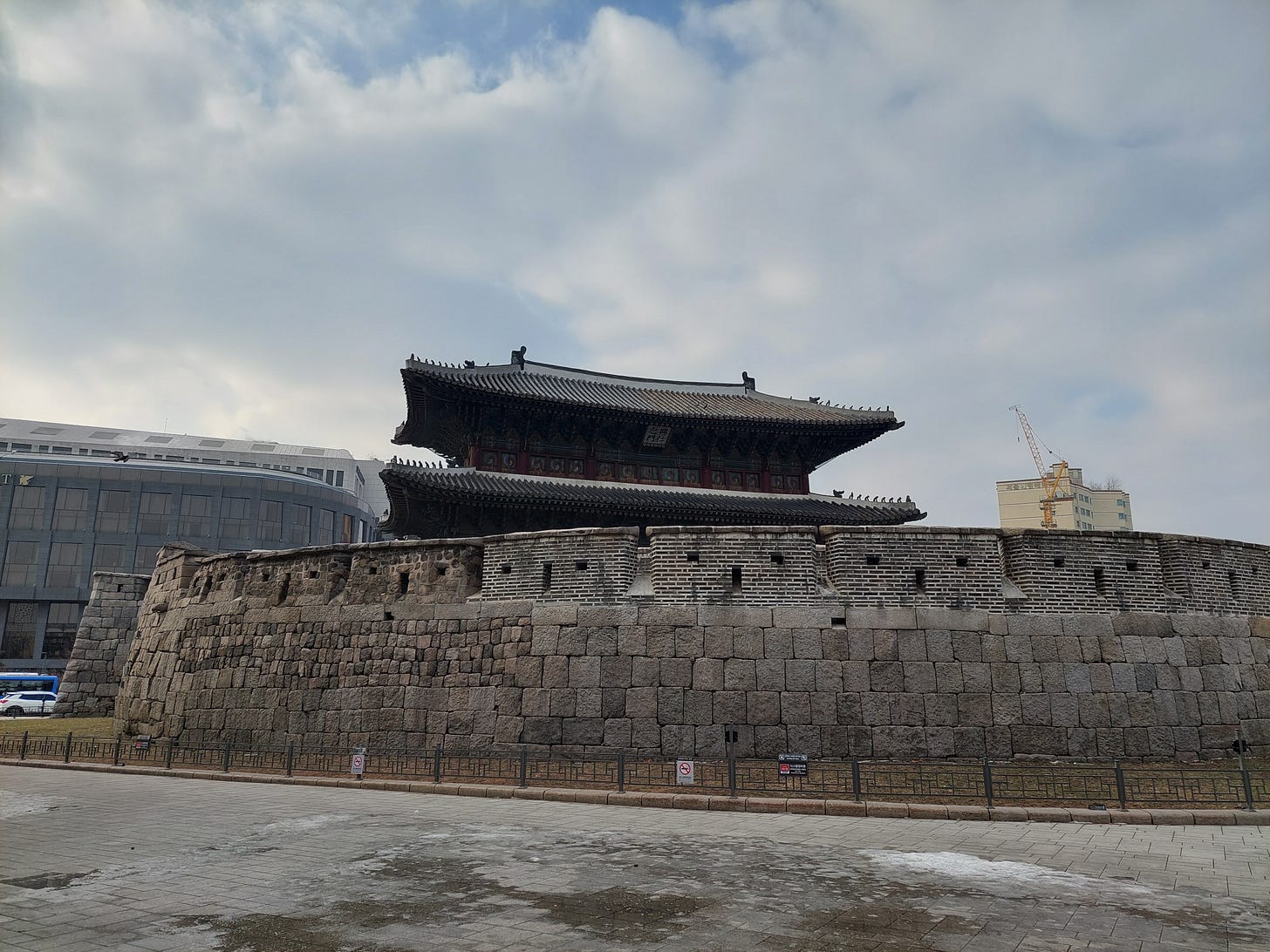


Enjoyed that. 인선동 pictures looked familiar. I remember enjoying the quaintness of it all...almost magical. Why did I think it was 인사동?
Also, 동대문 and the other remnants of Korean history are astounding. Odd size rocks appeal to me. Didn't know my history well enough though so now I will try to remember the dates...1300s... incredible.
What you describe is exactly the same impressions I got of Seoul every time I went there: juxtaposition of extremely old and brand new.
Thanks!
Thank you for sharing some of the ways you have made travel plans affordable.
Also, I appreciate your humor, "There are things that a 54-year-old man wants to do when he travels, and there are things that 20-year-old girls (20, 19, 17 to be exact) want to do. And they’re largely incompatible. I don’t need to tell you whose plan we went with."
I love the idea of a Tokyo stop over. I have a friend who just came back from Japan and loved it, especially the bamboo forest. Cloud Gate Dance Theatre has a dance called Bamboo Dream and ever since seeing it performed, I have wished to visit a bamboo forest. [Also, the tv drama The King: Eternal Monarch has some marvelous scenes in a bamboo forest. - "One of the major filming locations of the series is the bamboo forest, where the door to either of the two worlds is located. The related scenes were shot at Ahopsan Bamboo forest, Busan. Some scenes were filmed at Taepyeong Salt Farm in Jeungdo Island in Sinan." - wikipedia info.]
Your stories are always fun to read and give me lots of ideas.